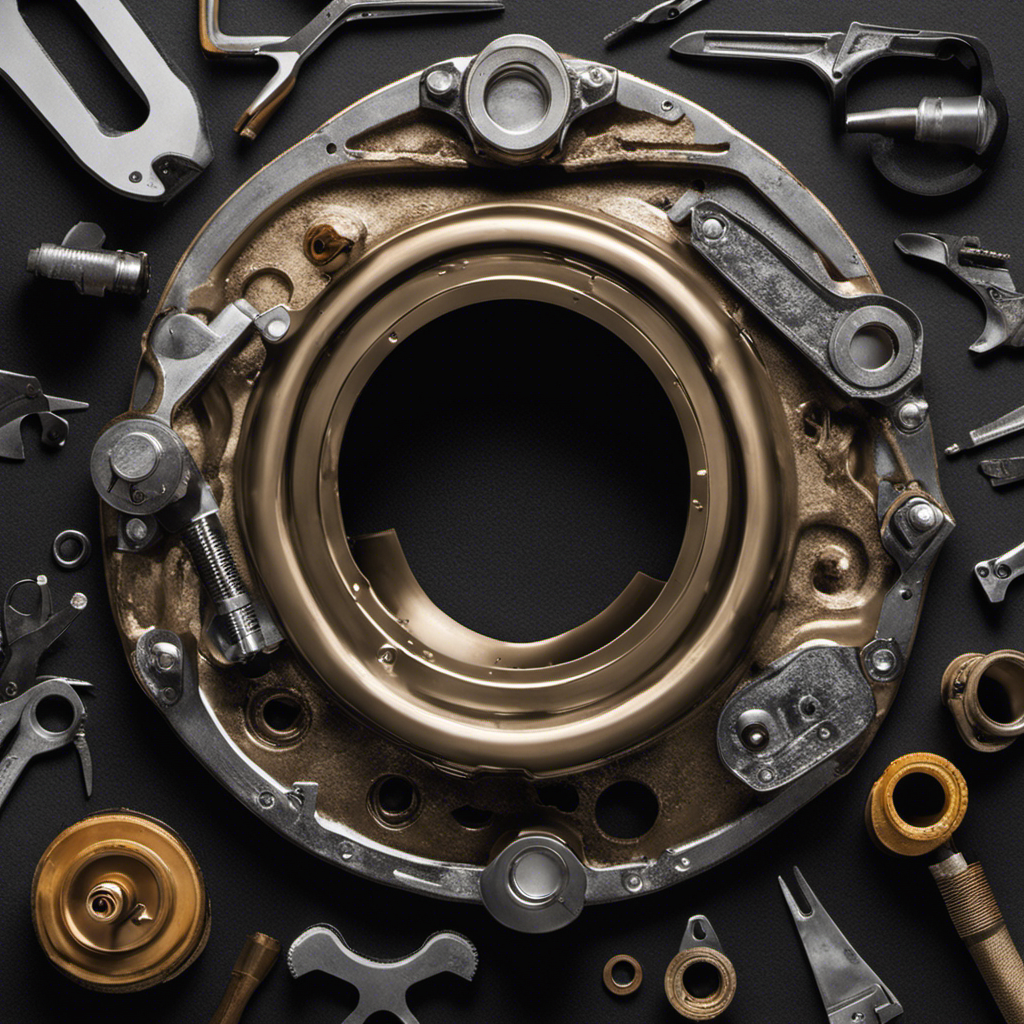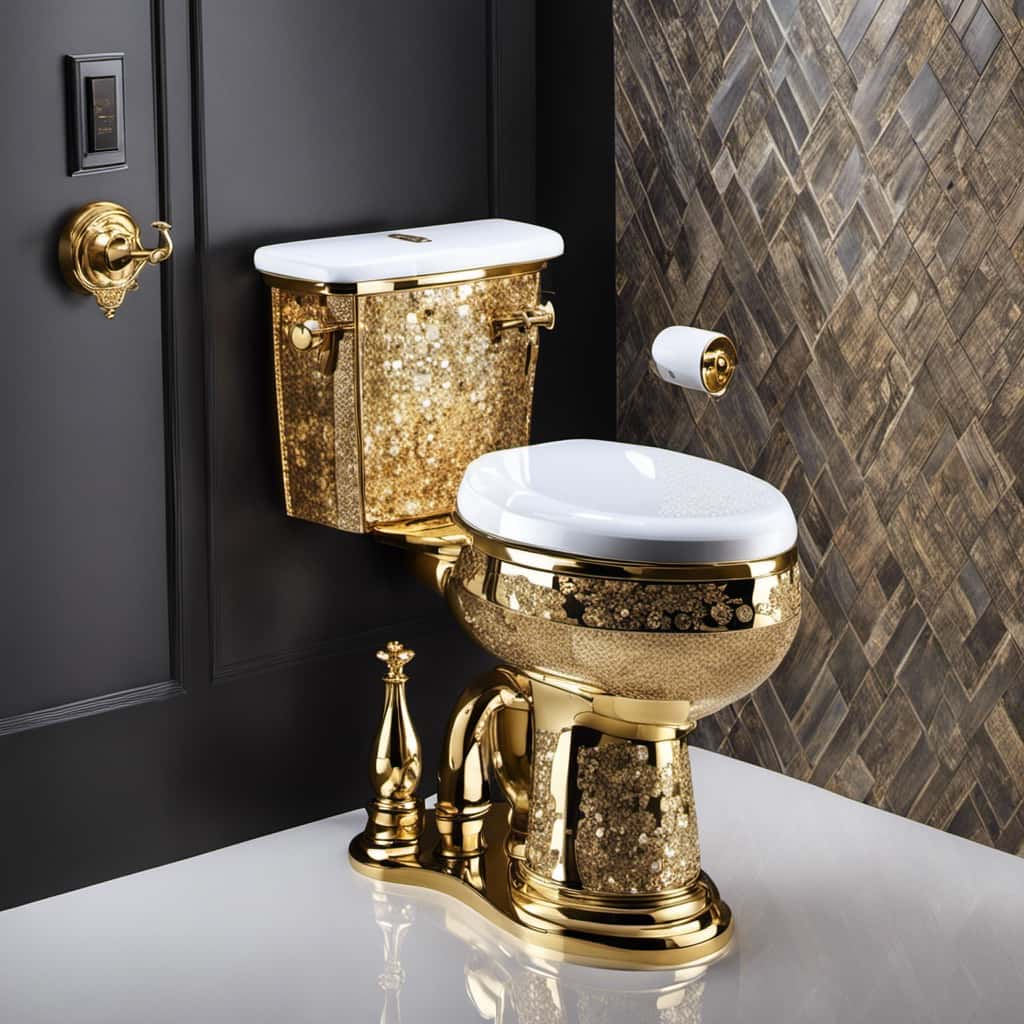I’m here to help you tackle a common household problem: a broken toilet flange.
It’s like the foundation of your toilet, and when it’s damaged, it can cause leaks and wobbling.
But fear not! In this step-by-step guide, I’ll show you how to fix it using simple tools and materials.
We’ll start by assessing the damage, then move on to removing the toilet, repairing or replacing the flange, and finally, reinstalling the toilet.
Let’s get started!
Key Takeaways
- Assess the condition of the toilet flange and seek professional help if unsure about repairs.
- Gather the necessary tools and materials, including a wax ring, flange repair kit, and PVC primer and cement.
- Properly remove the toilet by turning off the water supply, disconnecting the water supply line, and lifting the toilet off the flange.
- Repair or replace the flange by inspecting for damage, using a repair kit or epoxy, and aligning the new flange with the toilet drain.
Assessing the Damage
Now, you need to start by checking the condition of the toilet flange.
Evaluating options is important to determine the best course of action.
Begin by removing the toilet carefully to expose the flange.
Inspect it for any cracks, rust, or other signs of damage.
If the flange is only slightly damaged, you may be able to fix it yourself.
However, if the damage is severe or if you’re unsure about the repairs, seeking professional help is advisable.
A professional plumber can assess the situation and provide expert guidance.
Remember, it’s crucial to address the issue properly to avoid further damage or leaks.
Once you have evaluated the condition of the flange, you can move on to gathering the tools and materials needed for the repair.
Gathering the Tools and Materials
First, you’ll need to grab the necessary tools and materials for the job. Fixing a broken toilet flange requires a few specific items to ensure a successful repair. Here is a list of what you’ll need:
| Tools | Materials |
|---|---|
| Adjustable wrench | Wax ring |
| Hacksaw | Flange repair kit |
| Screwdriver | PVC primer and cement |
| Putty knife | Toilet bolts and nuts |
Finding alternative solutions may seem tempting, but it’s crucial to understand the importance of a secure flange. A properly functioning flange ensures a tight seal between the toilet and the waste pipe, preventing leaks and potential water damage. Neglecting to fix a broken flange can lead to more significant issues down the line, such as sewage leaks or unstable toilets. So, gather the tools and materials listed above to get started on repairing your broken toilet flange and maintain a secure and reliable bathroom fixture.
Removing the Toilet
To begin, you’ll want to detach the toilet from its current position. This step is necessary in order to access the broken toilet flange and replace or repair it.
Here are the steps to remove the toilet:
- Turn off the water supply to the toilet by shutting off the valve located behind the toilet.
- Flush the toilet to empty the tank and remove any excess water using a sponge or towel.
- Disconnect the water supply line from the bottom of the toilet tank.
- Remove the nuts or bolts securing the toilet to the floor using a wrench or pliers.
- Carefully lift the toilet straight up and off the flange, being cautious not to damage the wax seal.
Repairing or Replacing the Flange
In order to successfully repair or replace the flange, you’ll need to carefully inspect its condition and determine the appropriate course of action. Here are some troubleshooting tips and repairing techniques to help you with the process:
-
Inspect the flange:
-
Check for any cracks or damage.
-
Ensure the flange is securely attached to the floor.
-
Look for signs of wear or rust.
-
Repairing the flange:
-
If the flange is cracked, use a repair kit or epoxy to fix it.
-
If the flange is loose, tighten the screws or bolts holding it in place.
-
Replace any damaged parts with new ones if necessary.
-
Replacing the flange:
-
Remove the old flange using a wrench and screwdriver.
-
Install a new flange by aligning it with the toilet drain and securing it tightly.
-
Test the toilet to ensure it is working properly.
Reinstalling the Toilet
Once you have successfully repaired or replaced the flange, you can now proceed with reinstalling the toilet.
Start by placing a new wax seal onto the flange, making sure it is centered.
Carefully lower the toilet bowl onto the wax seal, ensuring that the mounting bolts go through the holes in the base of the toilet.
Gently rock the toilet back and forth to help the wax seal create a watertight seal.
Once the toilet is in place, tighten the nuts onto the mounting bolts to secure the toilet to the floor.
Use a level to ensure that the toilet is perfectly level from side to side and front to back.
Make any necessary adjustments by adding or removing shims under the toilet.
Conclusion
In conclusion, fixing a broken toilet flange is a necessary task that can be accomplished with the right tools and materials. By assessing the damage, gathering the necessary supplies, removing the toilet, and repairing or replacing the flange, you can successfully resolve the issue.
It is important to follow the steps carefully and ensure that the flange is securely installed to prevent any future problems. Remember, investigating the truth of a theory can make the process more interesting and ensure a successful outcome.










